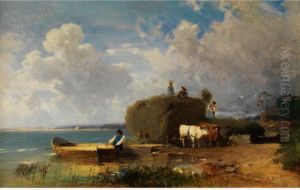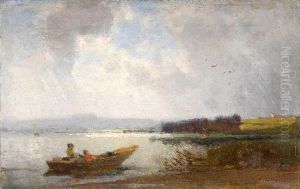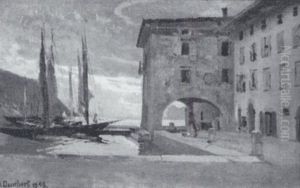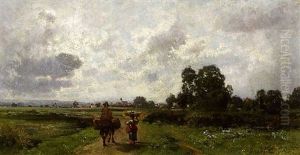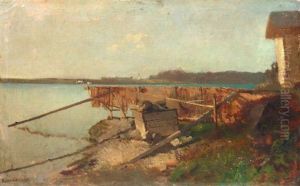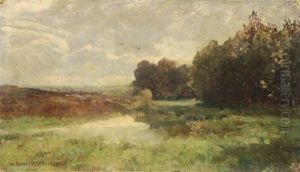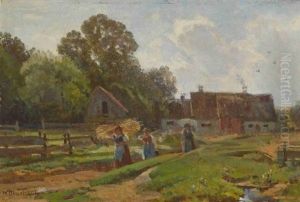Heinrich Deuchert Paintings
Heinrich Deuchert was a German painter known primarily for his landscape paintings. Born in 1840 in Nuremberg, Germany, he grew up in a time when the Romantic movement had a significant impact on the arts in Europe, influencing his early style and subject choices. Although not as widely recognized as some of his contemporaries, Deuchert's work was appreciated for its detail and sensitivity to the natural world.
Deuchert studied at the Nuremberg School of Fine Arts, where he honed his skills in painting. After completing his studies, he traveled throughout Europe, which was common for artists of the time, to further his education and find inspiration. His travels took him to various landscapes and regions, which he captured in his paintings, reflecting the 19th-century fascination with nature and the sublime.
The majority of Deuchert's oeuvre consists of landscapes that often depict the German countryside, with a particular focus on the play of light and shadow, as well as the changing seasons. His work displayed a technical proficiency in capturing the nuances of the natural world, a testament to his dedication to plein air painting, a practice that involves painting outdoors to achieve an accurate representation of the landscape.
Deuchert's paintings were exhibited in various art shows and galleries throughout his career. However, he remained relatively modest in terms of fame during his lifetime, overshadowed by more prominent artists of the era. Despite this, his paintings were collected by those who appreciated his quiet, contemplative approach to landscape art.
Heinrich Deuchert's artistic career spanned a period of significant changes in the art world, including the rise of Impressionism and the beginning of Modernism. However, he remained true to his style, which was rooted in the traditions of the Romantic period, even as the art world around him evolved. Deuchert passed away in 1922, leaving behind a body of work that continues to be appreciated by art historians and collectors for its serene beauty and its portrayal of the German landscape.



